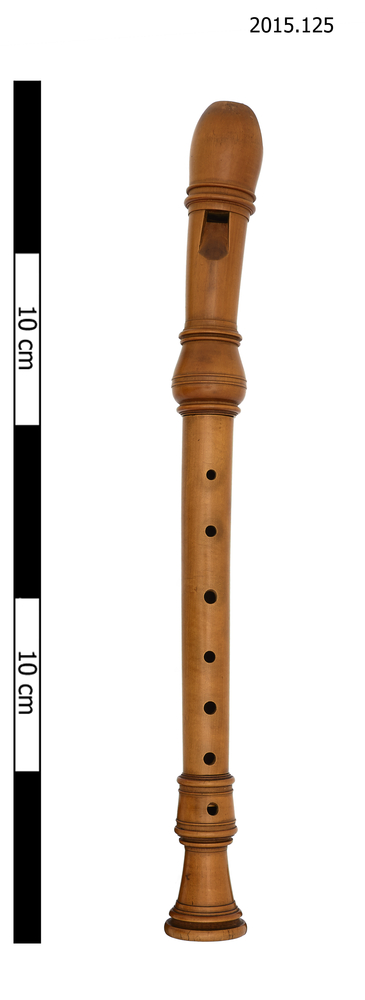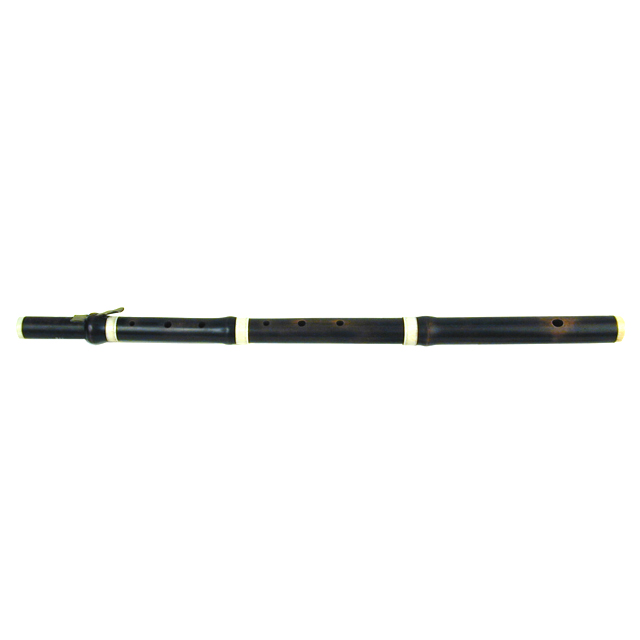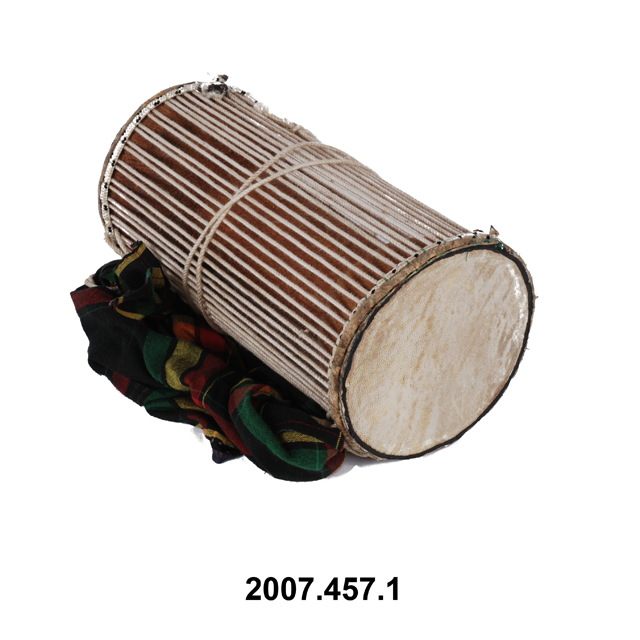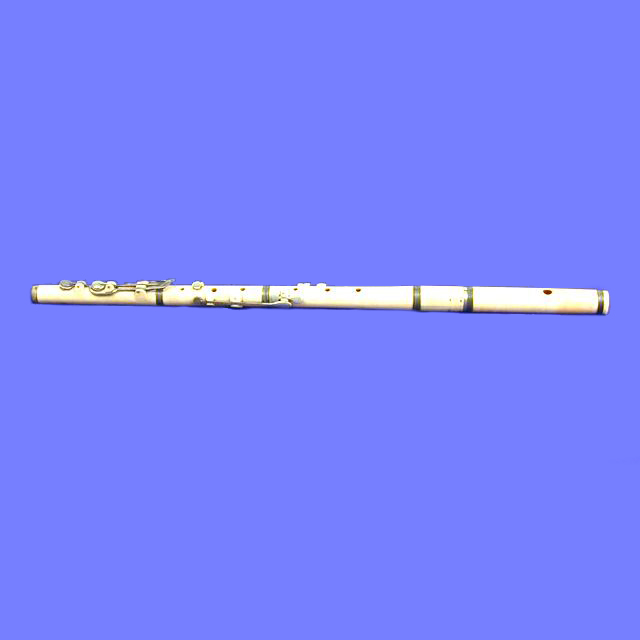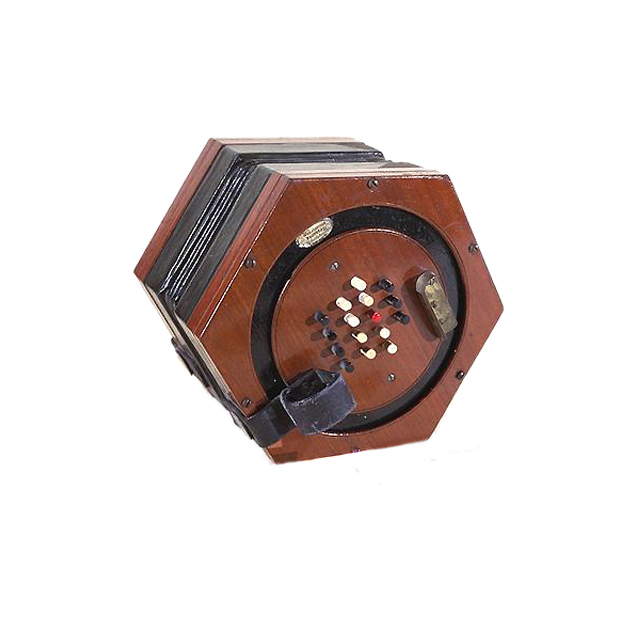
English system concertina. Serial number 878. Oval paper label: 'By His Majesty's Letters Patent, C. Wheatstone, Inventor, 20 Conduit St., Regent St., London.' Straight grained mahogany ends, probably built to standard width: 6¼ inches across parallel sides. The ends are plain, without fretwork, but in its place a circular section of the mahogany has been cut away, exposing the pine backing, subsequently painted black. 32 keys: 16 each side, ivory with black accidentals, stamped with note names. Later black leather straps with nickel screws. Four-fold green leather bellows, silk base reinforcement and gold circle and dot papers. Square-end nickel reeds.
Charles Wheatstone (1802-1875), best known for his work in the field of physics, patented the English-system concertina in 1844. The instrument had already been in production for some years following his 1829 patent for the symphonium, a free reed mouth organ. A bellows-blown model was shown in an illustration accompanying the 1829 patent. Charles Wheatstone's family had been involved in the musical instrument trade for some years, and his brother William Dolman Wheatstone joined the firm in 1837. The following information is recorded regarding the purchase of this instrument in the ledgers of the Wheatstone concertina factory (http://www.horniman.info): Purchase information from production ledgers: 26 Jun 1845: 32 [keys] P[lain] Mrs Pickering (C1046, p.36; C104a, p.45). The concertina is classified according to the system of Hornbostel and Sachs as a 'set of free reeds, with flexible air reservoir and keyboard'.



